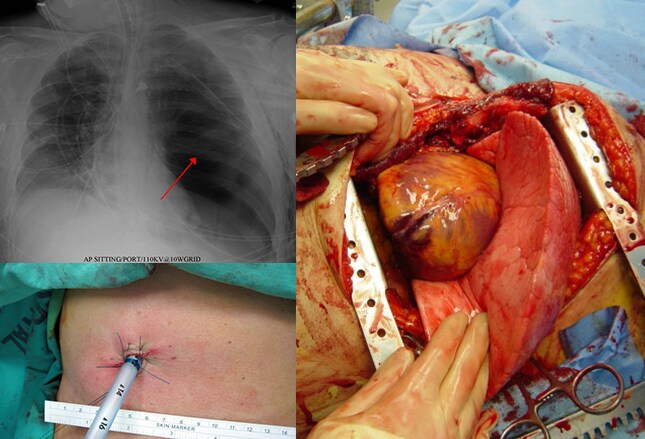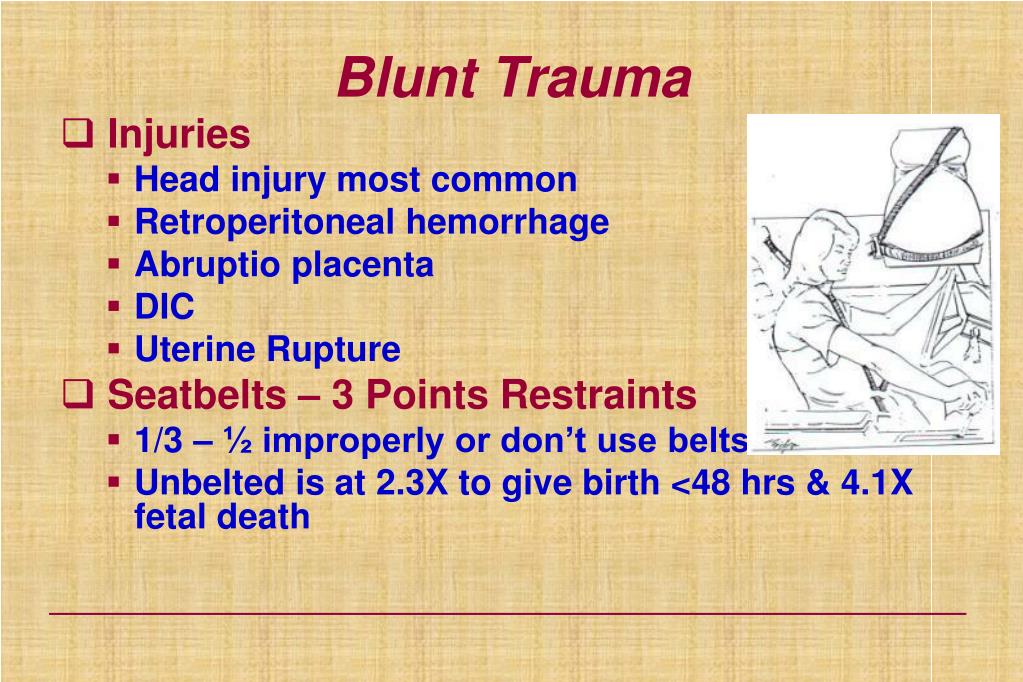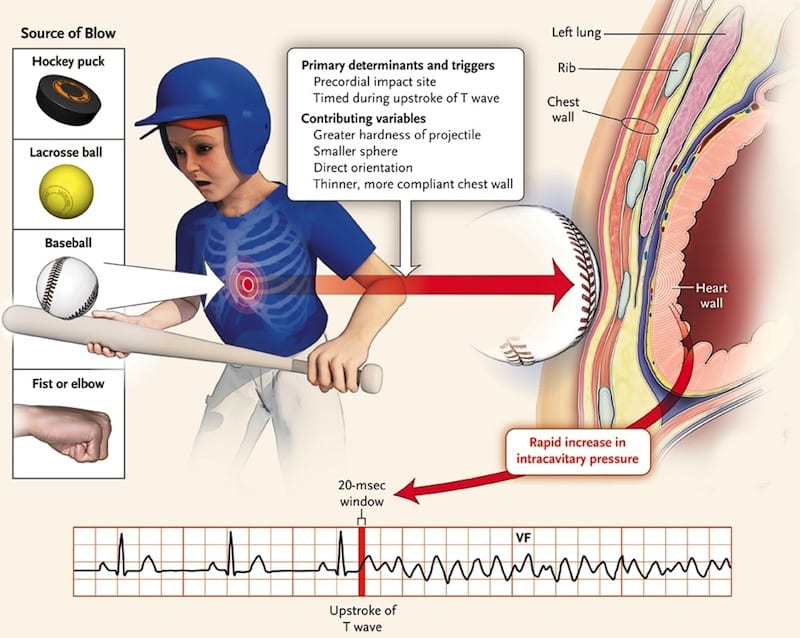

- #BLUNT TRAUMA FOR FREE#
- #BLUNT TRAUMA FREE#
Check above the diaphragm for signs of free fluid in the left hemithorax.

One should visualize the diaphragm and the entire spleen.Perisplenic space LUQ (left upper quadrant) Fluid in the abdomen can move freely to the right pericolic gutter into this space.Ģ. In the supine patient, the hepatorenal space is the most dependent area and the least obstructed for fluid flow.
#BLUNT TRAUMA FOR FREE#
One should evaluate for free fluid in Morison's pouch or the hepatorenal space, the lower pole of the kidney and the space below the diaphragm on the right. The Extended Focused Assessment with Sonography for Trauma (EFAST) exam includes the following views: Īll indications for trauma ultrasound include blunt or penetrating trauma to the torso where there is a suspicion of intraperitoneal hemorrhage, pericardial tamponade, and hemothorax. For unstable patients, one may perform an ultrasound (Extended Focused Assessment with Sonography for Trauma (EFAST)) or diagnostic peritoneal lavage, both of which are associated with a high rate of false negatives and false positives. If the patient is hemodynamically stable, CT scan is the ideal test to look for solid organ injury in the abdomen and pelvis. The diagnosis of intra-abdominal injury following blunt trauma depends primarily on the hemodynamic status of the patient. The evaluation of any trauma patient begins with evaluating the airway, accessing the breathing, and managing the circulation. The mechanism of injury, motor vehicle speed, associated deaths at the scene, uses of alcohol or other substance of abuse must be taken into account so as not to miss an injury. If peritonitis is present, abdominal rigidity, guarding and rebound tenderness may be present. The physical exam may reveal marks from a lap belt, ecchymosis, abdominal distention, absent bowel sounds and tenderness to palpation. Besides pain, the patient may present with bleeding per rectum, unstable vital signs, and the presence of peritonitis. History and Physicalīecause the presentation is often not straightforward, the diagnosis can be difficult and often time-consuming. Patients can also present with extra-abdominal injuries such as extremity injuries. Pathophysiologyīlunt abdominal trauma can cause damage to the internal organs, resulting in internal bleeding, cause contusions, or injuries to the bowel, spleen, liver, and intestines. Each year thousands of patients with blunt abdominal injury are seen in emergency departments, and this substantially increases the cost of healthcare. 
Epidemiologyīlunt trauma to the abdomen can occur in people of all ages and is associated with a high morbidity. In children, the most common causes are due to motor vehicle injuries and bicycle accidents. Other rare causes include falls from heights, bicycle injuries, injuries sustained during sporting activities, and industrial accidents. The chief cause of blunt abdominal trauma in the United States is motor vehicle accidents. Describe how an interprofessional team can collaborate to improve the rapid diagnosis, resuscitation, evaluation, and management of this condition and education of patients about safe driving to prevent blunt abdominal trauma.Ībdominal trauma caused by blunt force is a common presentation in the emergency room seen in adults and children.Explain the management and rehabilitation strategies for patients with blunt abdominal trauma.Outline the clinical presentation of blunt abdominal trauma.Describe the types of injuries sustained in blunt abdominal trauma.This activity describes the clinical presentation, evaluation, and management of blunt abdominal trauma and the importance of the interprofessional team in educating patients on prevention of abdominal injuries. Abdominal trauma caused by blunt force is a common presentation in the emergency room seen in adults and children.







 0 kommentar(er)
0 kommentar(er)
